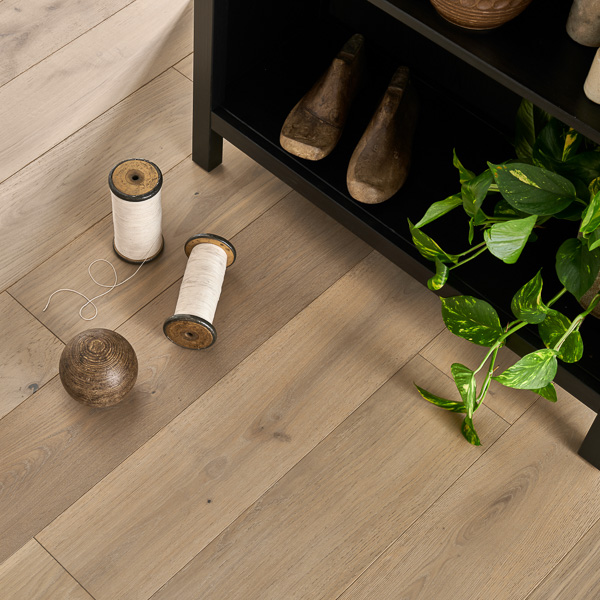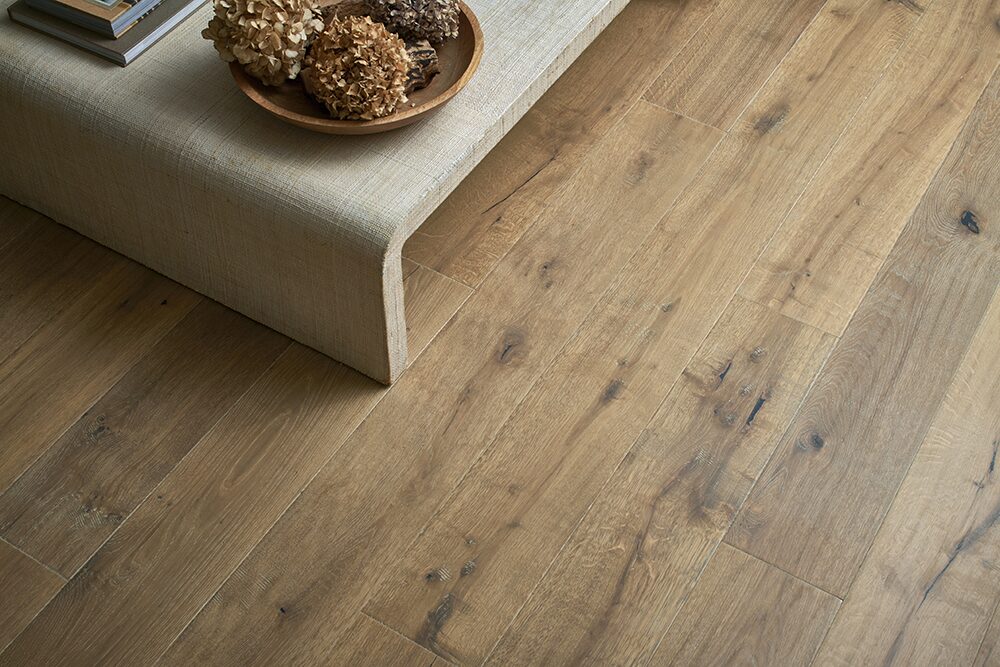Hardwood Flooring Staining: Essential Knowledge Before You Start

Harlech Feather Oak
Hardwood flooring staining is a project that holds the promise of complete transformation. When done right, it elevates your entire space. When rushed, it can hide the natural beauty of your floor under a mismatched tone or patchy finish. Whether you’re tackling a full restoration or simply rethinking your interior look, it’s important to understand the real-world nuance that comes with staining hardwood floors.
Know Your Timber
Hardwood flooring staining is never one-size-fits-all. Different hardwood flooring types absorb stain at different rates. For example, oak and walnut take stain beautifully, showcasing the grain in rich, even tones. Maple or birch? Far trickier. Their tight grain resists stain, often leading to a blotchy or uneven look if not prepared meticulously.
Start by testing stain samples on your wood floor. Apply them in inconspicuous areas. Look at them in morning light, evening shadows, and with your room’s lighting. This step matters. It’s the only way to know how the tone will truly live in your space.
If you’re unsure how your species of wood will behave, our guide to choosing wood flooring can help you understand the differences in flooring construction, species, and finishes before you decide if you should stain your hardwood floor.
Preparing for Hardwood Flooring Staining
Dust. Oils. Residue from old finishes. These all interfere with how stain penetrates wood. Staining over a poorly sanded floor can result in splotchy, uneven colouring. The best results come from gradual sanding through finer grits, with careful vacuuming between each pass.
If you’re considering a darker stain, sanding mistakes will be amplified. Lighter stains are a little more forgiving, but they still demand care. If your boards have previously been painted and you’re looking to repaint wooden floor areas or strip them back to stain again, plan for a deeper preparation and always spot-test first. The same goes for small, accidental splashes, even minimal residue can settle deep into the grain.
Should You Stain or Use Natural Alternatives?
Not every floor needs stain. Some hardwoods, like American walnut or smoked oak, have such rich natural tones that staining would mask their character. Our post on what is smoking in wood floors explains how fuming or smoking techniques can enhance natural depth without traditional stains.
This is where knowing your wood makes all the difference. If your aim is to let natural tones shine, a clear oil or light finish may serve better than a stain.
Choosing a Finish
A stain only sets the tone. Your finish protects the floor, enhances the colour, and gives your room its tactile feel. Whether you choose oil, lacquer or a hybrid product, the finish can slightly shift how the colour looks and how the floor behaves. Read our guide to wood floor finishes for a more in-depth explanation of the differences.
For kitchens or high-traffic areas, consider finishes that stand up to moisture and heat changes. Our blog on wood flooring in the kitchen outlines the importance of choosing products that combine durability with long-term beauty. Don’t forget to consider compatibility between stain and finish. Not all combinations work together, and testing a full system, from stain through to topcoat, is always recommended.
Restoring Older Floors
If you’re restoring an old floor, approach hardwood flooring staining with realistic expectations about what it can (and can’t) do. Sunlight, moisture, and daily use leave their mark on wood over time. Sanding and staining can blend these differences to an extent, but the result may not be perfectly uniform.
Instead of aiming for a perfectly uniform colour, embrace a finish that honours the life of the floor. It often results in something far more authentic, and much more beautiful.
For tips on looking after your floor once you’ve restored it, “Maintaining a wood floor: it’s easier than you think” offers practical, everyday advice.
Cleaning for Hardwood Floors After Staining
After the finish has fully cured, it’s vital to follow a cleaning routine that supports the longevity of your stain. Use a pH-neutral cleaner specifically made for wood, and avoid steam cleaners or anything abrasive.
You’ll find lots of practical tips in our blog on cleaning hardwood floors, which breaks down the essentials in a no-nonsense way. It’s also worth watching our care guide for Woodpecker floors if you’re working with our range.

Finding the Best Fit for Your Floor
Staining can renew a space, but it’s not something to rush or guess. Whether you’re weighing up wood floor stain colors, trying to match planks after a repair, or planning full hardwood flooring and installation, a well-informed approach makes all the difference.
If you’re still deciding whether a new floor might be the better route, our breakdown of carpet or wood flooring might help with that choice. Or if you’re open to alternatives altogether, have a look at the differences between LVT and real wood flooring.
One decision at a time, your floor can become the foundation for something remarkable.



